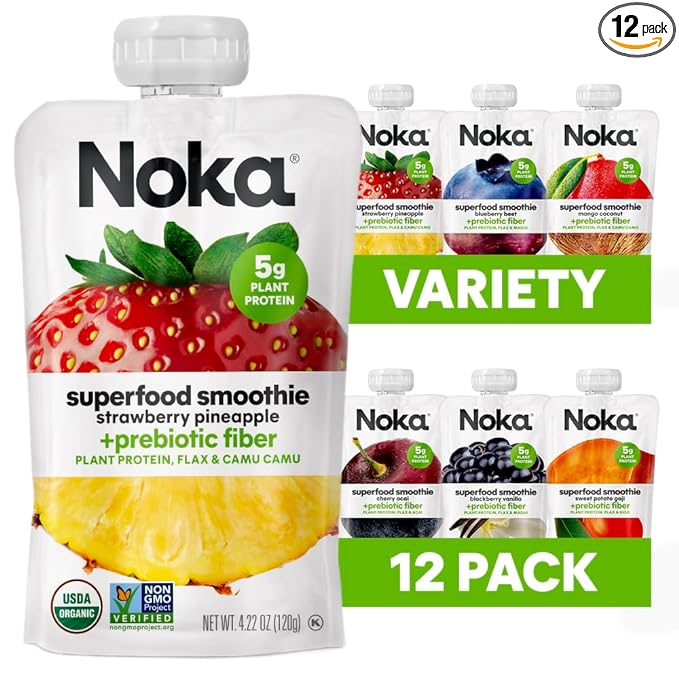Importance of healthy eating:
Healthy eating is essential for maintaining good health, preventing chronic diseases, and promoting longevity. A balanced and nutritious diet can provide the body with the necessary nutrients, such as vitamins, minerals, and fiber, that are vital for optimal functioning. Eating a variety of foods from all food groups, including fruits, vegetables, whole grains, lean proteins, and healthy fats, can help keep the body healthy and prevent the onset of constant infections like coronary illness, diabetes, and specific kinds of malignant growth.
Healthy eating also plays a significant role in maintaining a healthy weight, as consuming too many calories from unhealthy foods can lead to weight gain and obesity. Adopting healthy eating habits, such as reducing the intake of processed and high-fat foods, and increasing the consumption of whole foods, can help individuals manage their weight and achieve optimal health.
Benefits of weight loss:
Losing weight can have a significant impact on an individual's health and well-being. Some benefits of weight loss include:
Reduced risk of chronic diseases: Losing weight can help reduce the risk of developing chronic diseases such as heart disease, diabetes, and certain types of cancer.
Improved heart health: Losing weight can help improve heart health by reducing blood pressure, cholesterol levels, and the risk of heart disease.
Increased energy levels: Losing weight can increase energy levels, improve sleep quality, and reduce fatigue.
Better mental health: Losing weight can improve self-esteem and body image, reduce symptoms of depression and anxiety, and improve the overall quality of life.
Improved joint health: Losing weight can reduce the pressure on joints, which can help reduce pain and improve mobility.

Importance of lunch and dinner in weight loss:
Lunch and dinner are two of the most important meals of the day when it comes to weight loss. Eating a balanced and nutritious lunch and dinner can help individuals manage their weight and achieve their health goals.
Some tips for a healthy lunch and dinner include:
Include a variety of foods: Incorporate a variety of foods from all food groups, including fruits, vegetables, whole grains, lean proteins, and healthy fats.
Portion control: Focus on segment measures and abstain from gorging.
Avoid processed foods: Limit the intake of processed foods, which are often high in calories, sugar, and unhealthy fats.
Choose healthy cooking methods: Opt for healthy cooking methods such as grilling, baking, or roasting instead of frying.
Plan ahead: Plan meals ahead of time to ensure that they are balanced and nutritious, and to avoid making unhealthy food choices due to lack of time or preparation.
Practice mindful eating: Focus on the food while eating, and avoid distractions such as watching TV or using a phone, as this can lead to overeating.
Overall, incorporating healthy eating habits and making smart food choices can help individuals manage their weight and achieve optimal health. By paying attention to what they eat and making conscious choices, individuals can lead healthy, balanced, and fulfilling lifestyles.
Guidelines for healthy eating for weight loss
Caloric intake:
One of the most important factors to consider when trying to lose weight is caloric intake. Consuming fewer calories than the body needs can help individuals create a caloric deficit, which can lead to weight loss. However, it is important to ensure that calorie reduction is done healthily and sustainably. Drastic calorie reduction can lead to nutrient deficiencies and a slowdown in metabolism.
It is recommended that individuals aim to reduce their daily caloric intake by 500 to 750 calories per day to achieve a safe and healthy weight loss of 1 to 2 pounds per week.
Macronutrient balance:
Maintaining a balanced intake of macronutrients, such as carbohydrates, proteins, and fats, is crucial for optimal health and weight loss. A balanced diet that provides the body with all essential nutrients can help individuals achieve their weight loss goals.
Protein is important for muscle growth and repair, as well as for maintaining a feeling of fullness. Carbohydrates are the body's primary source of energy, and whole-grain carbohydrates are recommended over refined carbohydrates. Healthy fats, such as those found in nuts, seeds, and avocados, are important for brain function, hormone production, and nutrient absorption.
A balanced macronutrient intake for weight loss is generally recommended to be around 40% carbohydrates, 30% protein, and 30% healthy fats.
Importance of whole foods:
Whole foods are minimally processed and are rich in nutrients such as vitamins, minerals, and fiber. Eating whole foods can help individuals manage their weight by reducing the intake of added sugars and unhealthy fats.
Fruits and vegetables are important sources of nutrients and fiber and are recommended to be included in every meal. Whole grains, such as brown rice, quinoa, and oats, are recommended over refined grains. Lean proteins such as chicken, turkey, fish, and legumes are also important for maintaining muscle mass and keeping the body full and satisfied.
Portion control:
Portion control is important for weight loss, as it can help individuals reduce their overall caloric intake. Eating a lot of any food, even good food varieties, can prompt weight gain.
Some tips for portion control include using smaller plates, measuring portion sizes, and avoiding eating directly from containers. Eating slowly and mindfully can also help individuals recognize when they are full and avoid overeating.
In summary, healthy eating for weight loss involves sustainably reducing caloric intake, maintaining a balanced intake of macronutrients, choosing whole foods, and practicing portion control. By following these guidelines, individuals can achieve their weight loss goals while maintaining optimal health.

Healthy lunch ideas for weight loss
Hummus and veggie wraps: Spread hummus on a whole-grain wrap and fill it with sliced cucumbers, carrots, bell peppers, and lettuce. Roll it up and enjoy a nutritious and delicious lunch.
Lentil or black bean soups: A bowl of lentil or black bean soup is a great way to get a filling and nutritious lunch. These soups are high in protein and fiber, which can help keep you full and satisfied throughout the afternoon.
Turkey or veggie burgers: Grill a turkey or veggie burger and serve it on a whole grain bun with lettuce, tomato, and avocado. This is a satisfying and healthy lunch that is perfect for a busy day.
Tuna or egg salad with lettuce wraps: Make a healthy tuna or egg salad by mixing canned tuna or boiled eggs with Greek yogurt or avocado instead of mayonnaise. Serve the salad in lettuce wraps or on whole grain bread for a healthy and filling lunch.
Grilled vegetable sandwiches: Grill some vegetables, such as zucchini, bell peppers, and onions, and serve them on a whole-grain roll with hummus or pesto. This is a delicious and healthy lunch that is easy to make and perfect for vegetarians.
Brown rice or quinoa salads: Cook brown rice or quinoa and mix it with chopped vegetables, such as cucumbers, bell peppers, and tomatoes. Drizzle some olive oil and lemon juice over the top for a healthy and nutritious lunch.
In summary, there are many healthy lunch options for weight loss, including hummus and veggie wraps, lentil or black bean soups, turkey or veggie burgers, tuna or egg salad with lettuce wraps, grilled vegetable sandwiches, and brown rice or quinoa salads. By choosing healthy ingredients and preparing meals at home, individuals can enjoy a nutritious and delicious lunch that can help them achieve their weight loss goals.
![]()
Healthy dinner ideas for weight loss
Baked or grilled salmon or tofu: Salmon and tofu are both excellent sources of protein and healthy fats. Baking or grilling them is a healthy cooking method that can help reduce added calories. Serve them with steamed vegetables or a side salad for a healthy and satisfying dinner.
Zucchini or spaghetti squash noodles with tomato sauce: Zucchini or spaghetti squash noodles are a great alternative to traditional pasta. Top them with a homemade tomato sauce that is low in added sugars and sodium. Add some barbecued chicken or shrimp for additional protein.
Baked sweet potato with black beans and avocado: Bake a sweet potato and top it with black beans, avocado, and salsa for a healthy and satisfying dinner. This meal is high in fiber, protein, and healthy fats, and can help keep you full and satisfied throughout the evening.
Turkey chili or veggie chili: Make a healthy turkey or veggie chili with beans, tomatoes, and chili powder. Serve it with a side of brown rice or whole grain crackers for a filling and nutritious dinner.
Roasted chicken with roasted vegetables: Roast a chicken with herbs and spices, and serve it with a side of roasted vegetables, such as broccoli, carrots, and sweet potatoes. This is a healthy and satisfying dinner that is easy to prepare.
Shrimp or veggie stir-fry with brown rice or cauliflower rice: Stir-fry some shrimp or veggies, such as broccoli, bell peppers, and onions, in a healthy sauce, and serve it with a side of brown rice or cauliflower rice. This is a low-calorie, high-fiber meal that is perfect for weight loss.
In summary, there are many healthy dinner options for weight loss, including baked or grilled salmon or tofu, zucchini or spaghetti squash noodles with tomato sauce, baked sweet potato with black beans and avocado, turkey chili or veggie chili, roasted chicken with roasted vegetables, and shrimp or veggie stir-fry with brown rice or cauliflower rice. By choosing healthy ingredients and cooking methods, individuals can enjoy a nutritious and delicious dinner that can help them achieve their weight loss goals.

Tips for meal planning and preparation
Plan meals ahead of time: Plan your meals for the week ahead of time so that you know what ingredients you need to buy and what meals you will be preparing. This can help save time and money and can help ensure that you are making healthy choices.
Use the "half plate" rule: When preparing meals, aim to make half of the plate non-starchy vegetables, such as broccoli, carrots, and salad greens. This can help increase your intake of fiber, vitamins, and minerals while reducing your calorie intake.
Use healthy cooking methods: When cooking meals, use healthy cooking methods such as grilling, baking, or steaming. These methods can help reduce added calories and unhealthy fats.
Freeze leftovers for future meals: When you have leftovers, freeze them for future meals. This can help save time and money and can ensure that you have healthy meals available when you need them.
Use smaller plates to help with portion control: Using smaller plates can help you eat less by reducing portion sizes. This can help you reduce your calorie intake and achieve your weight loss goals.
In summary, meal planning and preparation are important for weight loss. By planning meals ahead of time, using the "half plate" rule, using healthy cooking methods, freezing leftovers, and using smaller plates, individuals can enjoy nutritious and delicious meals while achieving their weight loss goals.

Emphasize the importance of finding a healthy eating plan In conclusion, healthy eating is important for weight loss and overall health. By following guidelines such as caloric intake, macronutrient balance, whole foods, and portion control, individuals can make healthy choices and achieve their weight loss goals. Additionally, incorporating healthy lunch and dinner ideas, as well as meal planning and preparation tips, can help make healthy eating a manageable and enjoyable part of daily life. It's important to find a healthy eating plan that works for each individual's unique needs and preferences, and seeking support from a registered dietitian or healthcare provider can be helpful. Finally, it's important to remember that healthy eating is a lifelong journey, and focusing on progress rather than perfection can help individuals maintain a healthy lifestyle in the long term.






